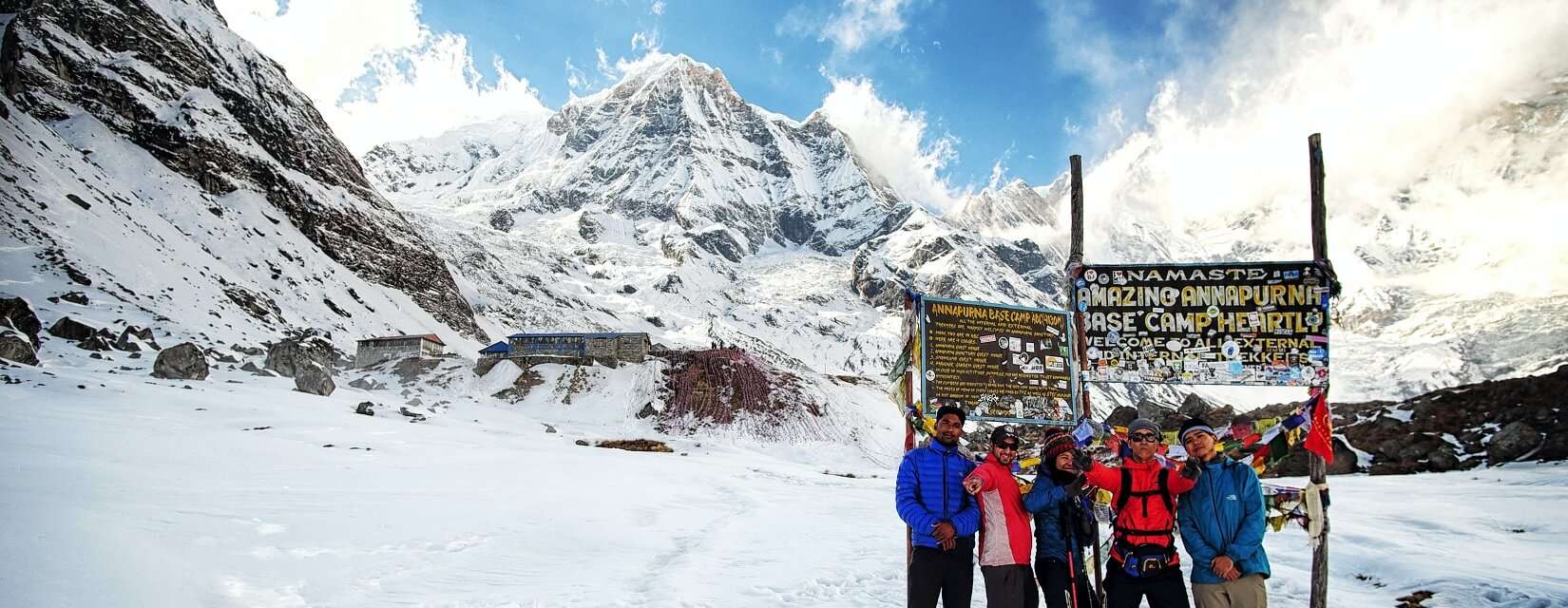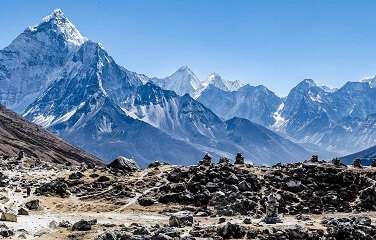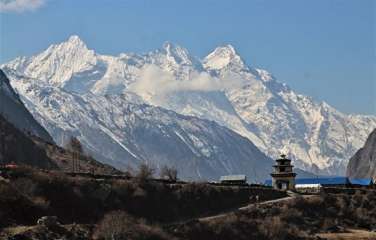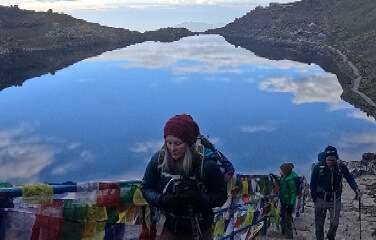Best Season to go

In Nepal, we have four different seasons that last throughout the year. They are spring (March to May), summer (June to August), winter (DECEMBER to FEBRUARY), and autumn. (SEPTEMBER – MID-DECEMBER). Choosing the ideal season for your vacation gives you more opportunity and pleasure. The best season to trek to Annapurna base camp is in the spring (March to April) and in the fall. (October – December). When the Rhododendron blooms in the spring, the trails become attractive as the red, pink, and white flowers cover them everywhere. But in October, the skies are clear and the views of the snow-covered mountains are breathtaking.
Safety precautions to take
There are safety measures to think about when hiking Annapurna, whatever your level of experience. You might avoid altitude sickness by using these suggestions. One of the most important things to keep in mind when trekking the Annapurna is to stay hydrated. Tablets for water filtration should be a staple of your hiking kit. They will aid in water purification more quickly than tap water. They are also excellent safety precautions if you are getting your gas from an unidentified source. Bring a refillable water bottle as well. It is advised that you carry four liters or more of water each day. Along with warm clothing, you should also have a power bank and an energizer.
Don’t let your body dehydrate and get energized more often
Always drink appropriately throughout the walk to keep all of your organs functioning normally and enable you to move quickly over the trails. It is suggested that you carry a water bottle sipper and sip from it frequently. Aside from staying hydrated, avoiding altitude sickness requires careful planning. Similar to this, always have some dry fruits (cashew, raisin) and energy snacks on hand for rapid energy boosts.
Trek slowly, enjoy more

When you start out slowly your trek to Annapurna Base Camp will be even more enjoyable. You are advised to hike comfortably up and down the mountains because trekking is not a race. By doing so, you'll help your body get used to the environment and lower your risk of getting altitude sickness. The Annapurna region offers beautiful scenery, Himalayan views, and a glimpse into the customs and cultures of the locals. Therefore, you would undoubtedly love to pause for a moment and shoot the ideal panoramic photo.
Prepare yourself Physically and Mentally
Fitness and mental preparedness are necessary for trekking. In addition, you will face various difficulties on your walk in the Annapurna region that could fail you in the worst ways. While the Himalayan scenery will inspire you with every step you take, your lack of physical fitness may also demotivate you as you walk for 4-6 hours each day while on the trek.
Therefore, hike/trek/walk for an hour every day throughout the hills of your hometown to get used to taking fast treks in the sweltering sun via the difficult trails. Make sure to perform aerobic activities at home if you don't have time to go on a trip or journey. Exercises like squats, sit-ups, crunches, step-ups, and pull-ups will help you condition your legs and back, preventing strain-related ailments. Nothing can stop you from ascending base camp and circumnavigating the Annapurna massif during the journey once you are physically prepared.
Remember, you are on Holiday, Enjoy Yourself

The most important point to keep in mind is that you are on vacation, so unwind, be open-minded, and have fun! When going on a trekking journey like the Annapurna Base Camp, there is always a ton of free time. With the exception of a few longer days, you typically walk for between four and six hours each day. As a result, you have enough time to unwind, recover, and have fun with your fellow trekkers when you get to the tea houses. Having this time is crucial for the duration of your adventure. It helps keep you calm and positive rather than uptight and worried.
Remember that the environment you are joining is considerably different from what you may be used to at home. It's possible that Nepal doesn't operate in exactly the same way as your native country. This is not to say that things are done improperly there; they are simply different. Be open-minded. To respect those who are there to assist us in achieving our goals, keep in mind that there will be cultural differences along the route.
How to avoid Altitude sickness?
Drinking enough water, filling up on meals, and abstaining from alcoholic beverages will help you reduce your risk of getting sick in the Himalayas. Even so, you can use a medication like Diamox to prevent sickness and aid in traveling to high altitudes if you experience such a condition. The most crucial thing is not to ignore acclimatization when climbing because it allows your body to acclimate to the high altitude slowly and properly.
Cost
It's important that you collect the right information before booking your Annapurna trekking programs. To enter Nepal, you have to decide whether you need a visa and how to obtain one. A reliable source of information is the Department of Immigration website. Additionally, the Nepal Tourism Board has a location in Kathmandu where you may get details about the Annapurna region. To enter the Annapurna Conservation Area, you must also purchase a TIMS card. The card can be used to call in an emergency as well. A guide, porters, meals, and insurance are all included in the price of Annapurna trekking programs. Additionally, you'll need to invest in warm gear and a sturdy hiking pack.
Don’t forget the Toiletries and Medicines

Alert: Squat Toilets! You will see eastern toilets on your walk to the Himalayas, which prioritize the use of water to clean your anal. Consequently, you can struggle if you are not familiar with the procedure. Therefore, remember to include wet wipes and toilet paper when you are packing. If you're a female trekker, be sure to take the appropriate amount of tampons, menstrual cups, and pads.
In addition to the amenities, be sure to carry the painkillers, water purification tablets, headache, diarrhea, and any other prescriptions you may need. Be sure to let the proprietor of the tea shop or your tour guide or traveling companions know if you have any allergies.
Always choose an organized trek
We advise taking part in an organized trek in Nepal if you're visiting Nepal for the first time on an expedition or have never gone hiking before. All of your luggage, excluding the daypack you need for walking, is carried by your porter. A knowledgeable English-speaking guide is always at your side to help you with any difficulties and is always in charge of any hurdles. Additionally, a planned excursion can save you time and relieve any unneeded stress associated with making travel plans, including lodging, transportation, and flights.
Related packages
- Annapurna Sanctuary Trek
- Manaslu Circuit Trek
- Langtang Valley Trek
- Annapurna Circuit Trek
- Nar Phu Valley Trek





